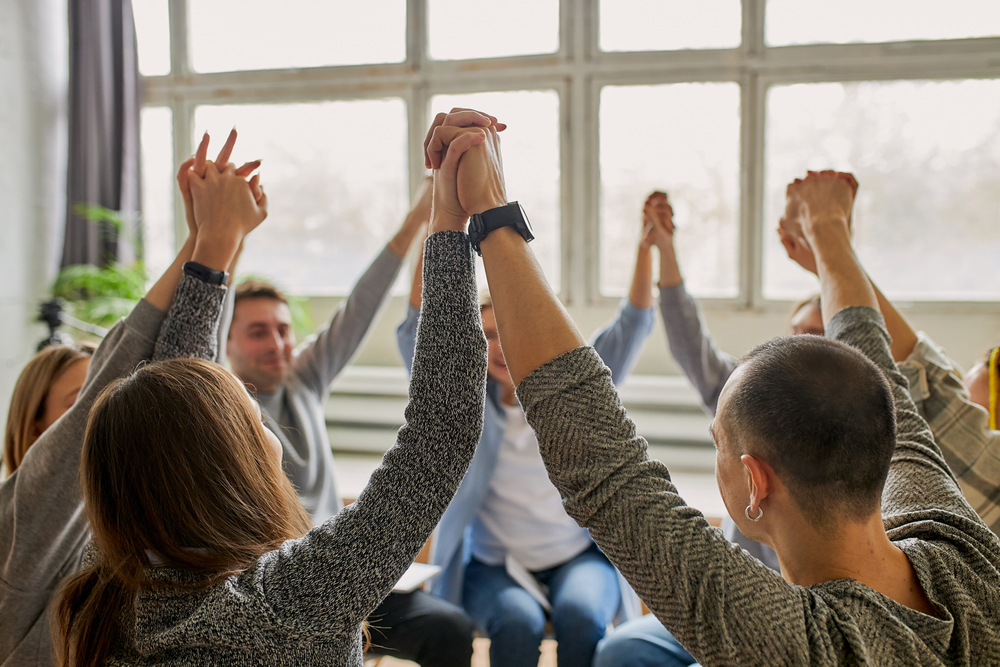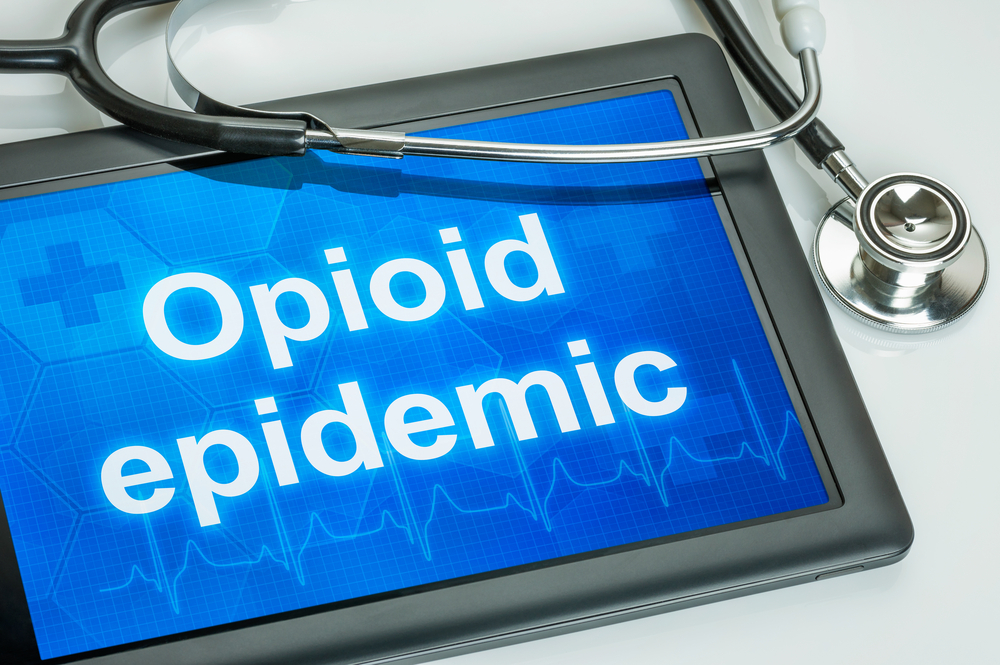
In 1951 Beatrice Jorgensen founded Friendly House, which was the first alcohol rehabilitation program created by women for women. The mission of Friendly House is to “provide women seeking recovery from alcohol and…

In 1951 Beatrice Jorgensen founded Friendly House, which was the first alcohol rehabilitation program created by women for women. The mission of Friendly House is to “provide women seeking recovery from alcohol and…

Substance use disorder (SUD), also known as addiction, is listed in the Diagnostic and Statistical Manual of Mental Disorders, Fifth Edition (DSM-5) as a complex, chronic, neurological disorder. The Mayo Clinic explains addiction…

Opioids are a type of drug used to alleviate moderate to moderately severe pain. According to the National Institute on Drug Abuse (NIH), “Opioids are a class of drugs that include the illegal…

LGBTQ+ is an acronym for lesbian, gay, bisexual, transgender, and queer/ questioning that is colloquially used to describe an individual’s sexual orientation or gender identity. People that identify as non-heterosexual or non-cisgender may…

Transitional housing, such as sober living facilities, are optional residential group homes for individuals to move into after completing a formal substance abuse and/ or addiction treatment program. The Los Angeles Times explains…

The Los Angeles Times explains that “according to the federal Department of Housing and Urban Development, housing is ‘affordable’ if rent and utilities cost no more than 30% of your total income each…

Detox, or detoxification, is the first step in the continuum of care for addiction treatment. The Substance Abuse and Mental Health Services Administration (SAMHSA) explains detox as “a set of interventions aimed at…

Eating disorders are defined as “serious medical illnesses marked by severe disturbances to a person’s eating behavior,” and are characterized by abnormal, irregular eating habits, and an extreme concern with one’s body weight…


Borderline personality disorder (BPD) is one of ten personality disorders listed in the Diagnostic and Statistical Manual of Mental Disorders, Fifth Edition (DSM-5). Each of the ten personality disorders is categorized into one…
©2024 Friendly House. Friendly House is a 501(c)3 Organization.
Terms of Use & Privacy Policy
Morgan J. Mallory, Esq. was invited to join the Board in 2010 by one of her personal heroes, the late Peggy Albrecht. Peggy was a cherished individual in the recovery community and beyond, and the person for whom Friendly House is now named. Inspired by Peggy’s vision that women’s recovery positively impacts the world, Morgan has dedicated 14 years to this remarkable organization, previously holding the positions of Secretary and Vice-President of the Board. Her upbringing instilled in her the belief that “to whom much is given, much is required”, which drives her commitment to helping others.
Morgan is a practicing attorney who has devoted her career thus far to public service, and currently serves as a Deputy District Attorney in Los Angeles. Morgan earned her Bachelor of Arts degree in Diplomatic History, with a minor in African-American Studies from the University of Pennsylvania. Thereafter she matriculated to and graduated from Loyola Law School in Los Angeles. While in law school, Morgan volunteered for many organizations and government entities including the Los Angeles City Attorney’s Office, the United States Attorney’s Office, The United States District Court, The California Court of Appeal, Bet Tzedek Legal Services, and the Los Angeles County District Attorney’s Office.
As a practicing attorney, Ms. Mallory worked as a volunteer prosecutor for the Los Angeles City Attorney’s Office, and was a Staff Attorney for Los Angeles Dependency Lawyers where she represented indigent parents in Juvenile Dependency matters. She was responsible for defending parents charged with abuse and neglect where many of the charges involved serious allegations including infanticide. Ms. Mallory then went on to join the Los Angeles County District Attorney’s Office. She has prosecuted misdemeanor and serious felony matters that include rape, other sex crimes, child abuse, human trafficking, domestic violence, child and elder abuse, child and elder sexual abuse, and gang related violent crimes and murder cases.
Morgan’s legal career and personal time have been marked by volunteering for, being of service to, and working with various legal, non profit and governmental organizations. She finds immense reward in seeking justice on behalf of victims and marginalized people. Morgan has received professional awards and currently serves on a number of boards for nonprofit and legal organizations, enjoys spending time with her family, and loves traveling around the world with her husband and child.
Greg Sowders is currently Senior Vice President A&R and catalogs for Warner Chappell Music.
During his 33+ years at Warner Chappell, he has played a key role in developing its leading frontline and catalog rosters. An industry veteran, Sowders joined Warner Chappell in 1991 as manager film & tv. Moving to A&R, he helped build their alternative, rock and pop rosters.
Sowders has signed and worked with artists and writers including Twenty One Pilots, Greta Van Fleet, Travis Barker, Paramore, Tyler Childers, Black Crowes, Green Day, Billy Corgan, Portugal the Man, Deftones, All Time Low, jxdn, Linda Lindas, Orville Peck, Nickelback, Slash, Megadeth, Disturbed, Kflay, Nate Ruess, Katy Perry, The Head and the Heart, among many others.
He was also principal in acquiring the rights to the catalogs of Tom Petty, David Byrne, Chris Isaak, Stone Temple Pilots, Smash Mouth, 311, Pantera, Liz Phair and Lucinda Williams. Sowders began his musical career in 1981 as drummer for the groundbreaking Los Angeles Americana pioneers, The Long Ryders and continues to record and perform with them to this day.
Greg has been an active member of the recovery community for over 26 years, served on the MusiCares grant committee and now sits on the Founders Board for the Neil Lasher Music Fund.
Emily has been a member of the Friendly House team since May 2021. Emily is a certified alcohol and drug counselor (CADC-II) and is working towards her degree in Women and Gender studies at CSUN. She is passionate about working with all individuals, especially women, non-binary folks, adoptees, and the queer community. Having had her own struggles with addiction, Emily began working in treatment at Beit T’Shuvah in 2013 where she helped develop their Extended Care Program. She spent two years working for The People Concern with the unhoused population. Here her work connected clients to social service programs and provided education on harm reduction and medication assisted treatment. Emily is committed to social justice, activism and education. Punk rock and cats are also her passions.
Bio:
Then Hansel said to Gretel, “Let us drop these bread crumbs so that together we find our way home. Because losing our way would be the cruelest of things.”
Most of us have lost our way at various points in our lives. I know I have. But the beauty is in the process of reconnection. We leave breadcrumbs to remind us of who we are. Our passions. Our values. Our goals. These breadcrumbs remind us of what we are fighting for. A healing journey is the process of uncovering and reconnecting to those breadcrumbs and continuing to drop more as we evolve and grow.
Who am I?
I am a dedicated advocate for those who feel they do not have a voice, that they are not empowered to heal, or cannot envision a hopeful future. From my extensive experience working with issues related to trauma, eating disorders, addiction, relationship dissatisfaction, and depression, I can help you chart a course out of the maze of dysfunction and onto the path of authentic connection to self and others.
I believe that deeply understanding who we are in relationships moves us forward in the healing process. Most of our triumphs and struggles occur in the context of relationships, especially our relationship to ourselves. By gaining a greater connection to our own passions, fears, and desires, we can create a new way of functioning in the world.
Licenses and Certifications:
Modalities:
I value, welcome, and affirm the full diversity of all people – supporting individuals of all genders, sexual orientations, races, and ethnicities. I am also passionate about adoption and attachment-related needs, drawing from my own experience as a parent of an older adopted child and my professional training in addressing the complexities of these courageous and often misunderstood individuals, couples, and families.
Kathryn Boyd Brolin is a photographer, director, actor and entrepreneur based in Santa Barbara. She attended University of Georgia and Santa Reparata School of Arts before graduating from UGA with a degree in Journalism. She began her career in the film industry before founding her business, Midheaven, for which she serves as its President and Creative Director. She serves as an ambassador for Leica and has gone on to shoot features for publications including Men’s Journal, The Rake and Hollywood Reporter among many others and exhibited with Leica’s Los Angeles Gallery along with their international online platform. She currently lives in Santa Barbara with her husband, Josh, and two daughters, Westlyn and Chapel, and is currently entering the festival circuit with her first film, “Mother’s Day.” In her spare time, Boyd Brolin works passionately to raise money for her and her husband’s family foundation, benefiting myriad organizations relating to children, families and cancer research.
I am so grateful to be part of the Friendly House – an organization that helps and supports women often during the darkest and worst times in their lives. I have had many family members who suffered silently, often with shame and no hope. Which makes being able to be part of a place that takes women in – no matter where they are socially or economically, a great honor to me. Believing in women and helping without judgment is what makes the Friendly House so unique and special.
As the leader and founder of Eisley Consulting, Zan Eisley transforms and revolutionizes the way acute psychiatric interventions are done. In addition, she is actively committed to destigmatizing mental illness by actively lobbying to change policy around both insurance and treatment.
Zan has worked in the behavioral health field since 2003. She ran one of the first structured sober livings in Los Angeles and was responsible for crafting the protocol on which the program was built. She worked as a recovery companion for four years. Zan was named VP of Hightower Associates in 2012 and was trained and mentored by the renowned interventionist, Earl Hightower. She trained and supervised every companion working for Hightower for 8 years. Working with Earl Hightower, they trained interventionists all over the United States and Canada. Zan had an unusually high success rate with acute psychiatric interventions and crisis management. Wanting to expand on what a psych intervention could be, she went on to create Eisley Consulting. As the founder of Eisley Consulting, she provides acute psychiatric interventions, complex case management, crisis management, and consulting services to executives, families, treatment centers, and companies that wrap clinical services.
Zan holds a master’s degree in social work from New York University. Her mission is to help people overcome their mental health issues and achieve meaningful recovery.
Prior to 2003, Zan graduated from NYU with degrees in Film and Political Science. She worked as a screenwriter and producer on several films and as a Research Analyst on Hate Groups and Domestic Terrorism.
Melissa is a digital content queen with a proven talent for delivering results. After graduating with honors from Harvard, she worked in magazine publishing for more than ten years in New York City, successfully building digital networks and breaking growth records for many major publishers, including News Corporation (NY Post, The Daily), Bauer Publishing (In Touch), American Media (Star, OK!, Radar, US Weekly), Grazia USA, and more. Melissa also has produced several major TV documentary series, and broke ratings records for the Investigation Discovery channel with the American Murder Mystery franchise. She has appeared as an onscreen talent for CNN, HLN, Access Hollywood, Reelz, and more, and was named one of FOLIO magazine’s Top Women in Media for 2018. Melissa was an official 2020 Webby Honoree for Documentary Podcasts, and a multiple nominee and honoree in 2022 for Web & Mobile Design (Best Visual Design – Aesthetic) and Social Media. She is the author of the bestselling books, Epstein: Dead Men Tell No Tales, and Predator King, as well as the forthcoming book Epstein, Inc. Melissa has obtained her Certificate in Addiction Treatment Marketing from the Behavioral Health Association of Providers. She has been in continuous recovery since 2013.
Cortney Shegerian is a founding member of Shegerian Conniff LLP and lead trial lawyer. Her practice focuses on employment law and includes all aspects of case management from case inception through trial, with particular emphasis in jury trials. Ms. Shegerian has extensive experience and success in all aspects of litigation, trial preparation and jury trials. Throughout her career as an attorney, she has tried numerous cases in both State and Federal Court and has Arbitrated cases. Ms. Shegerian has argued in the California Court of Appeal and the Supreme Court of California. Ms. Shegerian places her focus on discovering each client’s personal experience in order obtain the best possible outcome for their case.
Awards/Recognitions
Ms. Shegerian was named one of the “Most Influential Women Lawyers in Los Angeles” in 2017 and was named to he same award in 2019, 2021 and 2023. In February 2017, she became one of the youngest attorneys in California to argue a case before the California Supreme Court.
Volunteer Work
For the last several years Cortney has been an active volunteer in her community. She is a strong believer in the power of giving back and has seen firsthand the impact it makes on the world around her.
Ms. Shegerian is an active Board Member for Friendly House, has served as a volunteer for the Los Angeles County Bar Association’s Domestic Violence Program at Stanley Mosk from 2017-2021 and has volunteered the Sojourn Battered Women’s Shelter in Santa Monica from 2017-2022. In her work with these organizations, Ms. Shegerian has seen the difference that volunteering can make an immeasurable difference in the lives of others.
Speaking Engagements
Ms. Shegerian has served as a speaker and panelist in the area of employment law for the Women Lawyers Association of Los Angeles, the Beverly Hills Bar Association and the Los Angeles County Bar Association serving as speaker for the following seminars and topics:
Marya Khalil-Otto isn’ t just the President and CEO of VI Peel — she was also the very first patient . Her struggles with cystic acne as a teen weren’t abnormal, but she did have a unique connection to someone who could help address her acne at a time when many skincare treatments were not safe for skin of color : her father, Dr. Abdala Khalil, an emergency room doctor turned facial peel innovator and ultimate founder of the Vitality Institute.
Marya studied journalism during her undergraduate years at NYU and graduated in 2008 but was never far from her father’s side or his business, gatekeeping his incoming calls and ultimately becoming a pivotal player in his new skincare venture. After her father’s untimely passing, Marya boldly undertook a leadership role at the Vitality Institute to support her family and to preserve her father’s legacy – at only 25 years old.
Marya whole-heartedly believes that her position as CEO is her predestined path. Under her leadership, Vitality Institute has grown to offer 6 medical-grade VI Peel formulations customized for various skin conditions for the face and body, which and was named the best professional chemical peel by Cosmopolitan Magazine in 2022, and VI Derm, a full portfolio of clinical daily care products specifically formulated to reduce pigment and increase cell turnover.
She is proud to lead this minority and female-founded brand into the future, while ensuring it sticks close to its founding cornerstone: researching and developing products and treatments for skin of color. Marya has been featured in the Top 100 Innovators & Entrepreneurs magazine. She is a wife, mother of two children and two pups , and enjoys spending her time with her family, playing tennis, perfecting her Spanish, and getting in an early morning boxing session.
Keegan began working in inpatient SUD treatment in 2015 as a Recovery Technician, providing direct client care. Keegan moved into an administrative position where he assisted in ensuring the facility was providing the highest standard of care, and in compliance with regulations dictated by state licensing and credentialing. In 2022 Keegan joined the Friendly House team, bringing his previous knowledge and ready to meet new challenges head on.
Victoria graduated Pierce College woodland hills in June of 2023 and is a certified addiction treatment counselor (CATC-1). Victoria has been working in the field of addiction since 2020 and came to Friendly House in September of 2021. Victoria is a current student at Antioch University working towards her B.A in liberal arts with an emphasis in psychology. She has been a guest lecturer at Pitzer college and Claremont McKenna college lecturing on transgender rights, affirmation and visibility. Her twin sister Vivian, Dog Sophie, physical fitness and transgender advocacy are her passions.
My mission is to preserve Friendly model and expand its reach to make recovery accessible to women of all shapes, ages, and ability. I was very close to the late Executive Director, Peggy Albrecht, the major reason for my affiliation from 2011 to present. This position has chosen me, equipping my soul with a sense of duty to honor the founders and continue the mission. Women in need should have a safe place to go so that they may find a sense of purpose. Friendly House is a special model where women can get their lives back and become a proud member of society.
From personal experience to professional, I have been in the addiction treatment business for many years. I know first-hand we would not be where we are as an industry without the hard work of those who strive to serve.I have admired Friendly House and its mission to help women for a long time, and I want this organization to grow and thrive at this critical time, to continue to raise the standards in our industry. For me, there is no higher honor to serve on the board for such an outstanding organization.
I have eleven years as a professional specializing in addiction treatment including more than seven years with Friendly House in various capacities including Operations Manager. I’ve been on both sides –– as a resident who achieved sobriety twelve years ago –– and as on-site leader who understands what it takes for our residents, regardless of their financial resources, to achieve their primary objective to get sober. I have seen and directly experienced the compassionate top-tier treatment that Friendly House has to offer to every individual who becomes part of our family. The long-term viability of Friendly House is an imperative to me. It is a distinct honor to be on the Board of Directors of such an exemplary organization.
I have been clean and sober for 32 years from heroin and cocaine addiction. My dedication to recovery and my commitment to making sure that women are afforded a safe, non-judgmental space within which to transform their lives has led to me directly serving on the Board of Directors for Peggy Albrecht Friendly House; for it is only from this seat that I feel I have the opportunity to truly make a difference.
I came to learn about the Peggy Albrecht Friendly House through fellow board member Maryann Murphy. Peggy Albrecht Friendly House’s mission, to help woman recover from the tragic disease of alcoholism and addiction is something I have come to learn more about over the past year even though I have had friends who have devastatingly suffered from this disease. I am honored and grateful to be a part of this incredible organization and hope to carry on the life saving mission.
Marcia Harrow has offered Friendly House over 25 years of continued service as a volunteer and Board Member. We are proud to say that Marcia has now attained the status of Emeritus Board Member. We thank Marcia for her continued involvement, friendship and support of Friendly House.
Laury Martin first met Friendly House in 2022 through Rika Broccoli. Influenced by Rika’s philanthropic passion towards women’s recovery, Martin was inspired to follow suit. Martin’s own family has battled addiction, some recovered, while others are still active and hopes to her sales, HR and business development acumen contributes to Friendly House’s mission and growth for another 70 years.
I am a passionate advocate for women’s health and wellness. With a background in social work, I carry a deep understanding of the unique challenges facing women struggling with addiction. I am committed to providing the support and resources necessary for lasting recovery for the women of Friendly House.
15 years in the financial services industry with Fidelity Investments. Research and analysis and helping clients achieve their financial goals. Director of Business Development for Digital Media startup FanRocket. Winning clients for online marketing tv like series/product placement. Board member and fundraiser for Boston Youth Moves, a pre-professional dance training program that produced dancers for Alvin Ailey Company and others.
As a sober woman committed to helping other women, I am proud to be a member of the Board of Directors at Friendly House. Having personally experienced the devastation of addiction, I am dedicated to ensuring that other women have access to the support and resources they need by using my voice and influence to make a difference in the lives of those seeking recovery. Being part of this special community is my way of giving back and making sure that no one has to face the challenges of addiction alone.
Internal Medicine, Board Certified in Addiction Medicine, AAHIVM Certified in HIV Medicine
Dr. Mark Honzel graduated Alpha Omega Alpha from the University of Iowa medical school and went on to complete residencies in Internal Medicine, Anesthesiology, and Intensive Care Medicine from Columbia University in New York City.
Dr. Honzel has been practicing Addiction Medicine and HIV Medicine for the past 34 years and is currently the co-medical director of the Miracles 18-bed acute detoxification unit at Southern California Hospital in Culver City, California. He subsequently became Board Certified in Addiction Medicine and certified by the American Academy of HIV Medicine. He previously co-owned 7 addiction treatment facilities along the west coast of the United States. He currently serves as the addictionologist and Medical Director for 5 drug and alcohol treatment centers in the Los Angeles area including Haven House, Friendly House, and Vita Nova in Newport Beach and Encino, CA. He also has a busy office practice in Addiction Medicine, HIV Medicine, and Pain Management in Beverly Hills, CA.
Liz Folie, LMFT, has a B.A. in International Relations from The University of Southern California and a Masters in Marriage and Family Therapy from USC’s Rossier School of Education. She did her post-graduate study at the renowned Maple Counseling Center in Beverly Hills, working in both the adolescent and adult tracks. Liz has since worked in outpatient substance use and mental health treatment as a Group Facilitator, Individual Therapist, and Program Director. In 2020, Liz co-founded Academics Anonymous Supportive Housing, which assists students at The University of Southern California access recovery services. Liz has also served as a guest lecturer at USC on collegiate substance abuse and on leading group therapy sessions in a treatment setting. In her private practice, Liz currently sees adolescents, adults, and couples and specializes in substance abuse, Obsessive- Compulsive Disorder, and sexual identity discovery. Liz has interned with the well-known therapist and author Dr. Dan Siegel, helping him update the third edition of his foundational book on Interpersonal Neurobiology, The Developing Mind.
Nina Firooz (she/her) has been working in the recovery field for the last decade, and co-specializes in working with LGBTQ+ and BIPOC adults. She holds a Master’s Degree in Clinical Psychology LGBT Specialization from Antioch University Los Angeles, and is a Licensed Marriage and Family Therapist in both California and Florida. Nina began working with Friendly House in 2022. She supervises the MFT Associates and Drug & Alcohol Counselors, and provides in-service training for clinical, administrative, and support staff. She was previously the Clinical Director of La Fuente Hollywood Treatment Center.
Allegra is an Associate Clinical Social Worker. She earned her master’s in social work at Smith College in 2019, and her first master’s degree in women and gender studies from San Francisco State University in 2008. Allegra worked as a high school literacy specialist in the Bay Area for six years prior to becoming a clinical social worker/psychotherapist. She is a Los Angeles native, and has dedicated her professional life to community and family services. She is psychodynamically trained, trauma informed and emphasizes the intersection of culture, gender, and sexuality in her clinical practice.
Kaley is the Director of Operations at Friendly House managing the day to day functionality of the facility. A British native, and alumnus of Friendly House, she has a profound love and respect for the program and its mission. In 2014, Kaley began working in the field of recovery specializing in helping women suffering from alcohol and drug addiction. She has been a part of the Friendly House family as a resident, Grateful Heart, residential/detox technician, operations manager and now as Director of Operations.
Rachel is the Admissions Manager at Friendly House and is responsible for overseeing all areas related to Admissions. She has been working in the field of mental health, trauma, and substance use since 2014. She has managed a detox facility and held a leadership role as a Recovery Technician for residential treatment facilities. She has gained a wealth of knowledge related to the needs of people who are recovering from substance abuse, and struggles with mental health. As our Admissions Manager she uses this knowledge to connect with women and provide a safe space to begin their healing. Her dedication has been fueled by starting her own journey in sobriety at 19. Having this personal experience, Rachel is able to understand the courage it takes to reach out for help.
Bonnie is the Intake and Alumni Coordinator at Friendly House. As Intake and Alumni Coordinator Bonnie is responsible for overseeing all areas related to Admissions and our Alumni aftercare program.
She has an extensive background in the medical field, having worked various different positions in healthcare facilities since 2006. She has been a Certified Nurse Assistant and a Mental Health Technician in Detox facilities, Psychiatric hospitals, Emergency rooms and Residential Treatment centers. Her own experience as a woman in recovery drives her passion to help other women find the same freedom she has found.
Justine Gomez is the Administrative Coordinator at Friendly House. She is responsible for overseeing and managing all administrative duties. Justine began working in the field of recovery as a residential and detox technician in 2017. She has specialized in working with women who struggle with substance use disorder. As a woman of culture, who is in recovery herself, she brings her personal experience as well as prior professional experiences to the Friendly House family. She uses this experience to provide excellent care for each woman who steps through the doors, and to help Friendly House achieve its mission statement.
Stacy Cohen, MD is a double board certified general and addiction psychiatrist, licensed in Nevada, New York and California. She completed her residency training at the University of Chicago and Rush University, where she was the chief of reproductive psychiatry, and her addiction fellowship at UCLA Medical Center.
Prior to founding The Moment, Dr. Cohen was the Medical Director of several large addiction treatment programs in the Los Angeles area, which included all levels of care including detox, residential treatment, and intensive outpatient treatment. She has been involved in community education regarding mental health treatment and has published medical literature on a variety of mental health topics. She currently holds a teaching faculty appointment at UCLA.
Dr. Cohen founded The Moment after feeling frustrated with the fragmentation of mental health care in the outpatient setting. She believes the best treatment comes from a collaborative approach. Thus, she created a community of top-notch mental health professionals working together in a shared space.
By approaching mental health issues from biological, psychological, social, and spiritual perspectives, Dr. Cohen creates the truly integrative approach necessary to build lasting recovery from complex conditions. She offers private sessions for medication management and/or psychotherapy as well as consultation and referral services to help determine the most appropriate recovery programs for you and your loved ones
Heather A. Benton is an attorney and advocate. She has a passion for helping persons with substance abuse and mental health issues. Heather works for Disability Rights California as a Supervising Clients’ Rights Advocate/Supervising Attorney.
She has practiced in a variety of legal areas including dependency law, family law, workers’ compensation law, and most recently, disability rights and special education. Heather’s work includes starting a mental health team for Children’s Law Center and running a crisis and mental health program at her church, Bel Air Church (formely Bel Air Presbyterian Church). Heather earned her Juris Doctorate from The George Washington University Law School and her Bachelor of Arts in Psychology from California State University, Long Beach.
She has been sober since May 14, 2012, and believes that sobriety is a gift. Heather hopes to help Friendly House expand their footprint and serve more women who are entering sobriety. When she’s not volunteering, Heather enjoys cooking, painting, and going to the beach.
Dina LaPolt, owner and founder of LaPolt Law, P.C., is an entertainment attorney and activist who has represented some of the world’s biggest music artists and other A-list talent. LaPolt Law is the only firm of its stature owned and operated by a sole female attorney.
Her activism has changed the lives of countless music creators, notably through her work to help pass the landmark copyright law, The Music Modernization Act as well as other legislative and policy initiatives that affect the rights of her clients including starting the second largest songwriter advocacy group in the United States called Songwriters of N. America (SONA). As a result of her activism in the Black community, Dina was a recipient of the Black Music Action Coalition’s Change Agent Award and she also serves on the organization’s Executive Leadership Council. Additionally, LaPolt serves on the boards of City of Hope’s Music, Film and Entertainment Group, the Friendly House, which is oldest recovery home for women in the U.S for where she also received the 2022 Visionary Award, and the Neil Lasher Music Fund — a non-profit that provides financial assistance for addiction and recovery treatment to those in the music business and where Dina was honored in 2023 with the Thomas J. Moran Caron Music Award at the 29th annual Caron New York Gala. Dina was also inducted into the Billboard’s Women in Music Hall of Fame in 2019, received The Recording Academy’s prestigious Service Award, and has been frequently named to many ‘best-of’ lists, including Billboard’s Power 100, The Hollywood Reporter’s Power Lawyers, Variety’s Dealmakers Impact Report, Super Lawyers, and others. Dina became the First-Ever Billboard Top Music Lawyers’ Choice Award Winner in March 2024.
LaPolt is sober and has been in recovery since April 19, 1998.
Dr. Patrick lockwood grew up in a small southern missouri town, enculturated with classical southern and midwestern values like honesty, integrity, and the “neighborly” way of relating to people. He completed his b.A. In psychology at the university of missouri, then moved to l.A. To earn his doctorate of psychology at tcspp.
Dr. Lockwood has worked for non-profits, treatment centers, and has been a part of a number of startups over the past ten years. His background in community interventions began before he even graduated from the university of missouri where he successfully co-authored a grant creating a virtual intervention to help parents on campus become more connected and develop a supportive community while working at parentlink, a division of the university’s college of education.
Dr. Lockwood has trained with experts in the field of addiction treatment and has worked at every level of the treatment industry. He is currently an adjunct professor at california lutheran university, teaching future clinicians about clinical skills, addiction, and research analysis. He also has a podcast on youtube about topics related to mental health, wellness, psychology, and neuroscience called “the psychology checkup.” finally, dr. Lockwood is the author of “the fear problem,” a book integrating the neuroscience and evolutionary psychology of our fear process to explain why we get triggered by politics and other “hot topics.”
Katy Conroy is a Partner of Sklar Kirsh LLP in the Corporate and Real Estate Departments. She has a broad corporate practice, advising clients across a variety of industries in various corporate and transactional matters, including mergers and acquisitions, and equity and debt financing transactions. She counsels clients through all phases of the transaction process, including structuring, negotiation, implementation, and ongoing post-transaction advice. In addition, her real estate practice involves all aspects of the real estate industry, with a particular focus on equity investments, syndications, fund formations, and joint ventures. Katy routinely works on transactions involving multi-family, development, industrial, and office, as well as mobile homes and build-to-rent.
Prior to joining Sklar Kirsh LLP, Katy was an associate in the Global Corporate Group of Milbank, Tweed, Hadley & McCloy LLP in Los Angeles. At Milbank, her practice focused on mergers and acquisitions, restructurings, and equity and debt financing transactions and general corporate representation for both public and private companies. From 2009 to 2013, she was an associate in the Corporate Department of Proskauer Rose LLP, also in Los Angeles.
Born and raised in Los Angeles, Katy received her Bachelor of Arts in Government and Art History from Dartmouth College in Hanover, New Hampshire, where she served as an intern with the Hood Museum of Art and as a mentor in the college’s Big Brothers Big Sisters program. She received her Juris Doctor from UCLA School of Law, where she was a member of the UCLA Entertainment Law Review, and her Masters of Business Administration from the Anderson School of Management at UCLA, where she concentrated on finance and entrepreneurship.
At Milbank, Katy helped lead the firm’s involvement with Public Counsel’s dependency adoption program, a program in which she also participated during her tenure at Proskauer.
Katy enjoys travel, cooking, yoga, and tennis.
Krystal Manning has been a Licensed Psychiatric Technician for 25 years and during that time she has worked in acute psych, addiction medicine, adolescent psych, dual diagnosis, forensics and state hospitals throughout California. She was referred to Friendly House in 2023 and fell in love with the program. She is responsible for completing the medical assessments and assisting the clients with any medical and/or mental health issues they may be experiencing while in our care . Krystal is the proud mother of 2 adult sons and in her spare time she enjoys traveling with her mother and her friends.
Lamesha is a dedicated Friendly House alumni and Grateful Heart with a journey rooted in resilience and growth. She began her career as a Recovery Technician. Through hard work and a deep commitment to making a positive impact she progressed to become Operations Supervisor.
Lamesha is currently pursuing furthering her education to become a Substance Use Disorder (SUD) Counselor, demonstrating her passion for empowering women to reclaim their lives by fighting against addiction.
Lamesha believes in the power of community and is committed to helping women build strong networks of support as they journey toward a brighter future. Lamesha is an integral part of the Friendly House alumni community, she runs our weekly alumni support groups, attends our weekly Thursday night 12-step meeting and is part of our alumni outreach aftercare team.
Vivian Rubio is a Certified Alcohol & Drug Counselor (CADC II) who possesses extensive experience in addiction treatment. Her personal experience in recovery motivated her to pursue a career in addiction counseling, and she has excelled in her academic and professional pursuits. Vivian graduated with honors from Pierce College in 2018, and her expertise and knowledge in inpatient and outpatient treatment have earned her widespread recognition in the field. With six years of clinical experience in a specialized treatment center, Vivian has recently joined the team at Friendly House and is dedicated to making a difference in the community. Vivian’s strong passion for helping those struggling with addiction runs in her family – her identical twin sister also shares this devotion. Vivian continues to pursue her education at Antioch University Los Angeles to become a licensed marriage and family therapist. Vivian’s Beagle puppy, Flora, and her love for painting are also her passions.
Jasmine McMeeking (she/her), AMFT, has a Masters in Counseling Psychology with an emphasis in Expressive Arts Therapy from California Institute of Integral Studies. Jasmine has provided therapy at community mental health and private practice internships since 2020. In her free time, Jasmine enjoys writing poetry and playing video games.
Christina Simos is a leader, connector, and a disruptor to the status quo. As a student at Arizona State University in the 90’s, Christina founded Students Against Discrimination (S.A.D.). This group held the largest social justice rally on ASU’s campus and was responsible for creating social justice policies and changes that still stand today. She graduated with a BA in Journalism and was recognized by her alma mater and various organizations including the Lambda League for her work.
In June of 2005, Christina entered the Friendly House as a resident. There she was mentored by Friendly House’s former Executive Director Peggy Albrecht and quickly immersed herself in the recovery world. “Peggy mentored me, loved me and helped me be the woman I am today. I never left this house because it saved my life.” Over the last 17 years Christina has been the alumni coordinator, alumni president, secretary of their women’s AA meeting, helped produce various Grateful Hearts fundraisers and has remained a fixture in the recovery community. She currently is a Board of Directors member of the West Hollywood Recovery Center, LGBTQ+ Association of Mental Health Professionals, the National Association of Treatment Providers Board of Directors and is on the NAATP DEIB committee. Christina is also known for her singing and her love of dodgeball.
In 2013 Christina started working in treatment as a detox technician. Over the last decade she has held a variety of jobs, learning every aspect of the treatment industry from HR/compliance, management, admissions, marketing/business development to operations. As Director of Operations, one of her proudest achievements was helping a well-functioning recovery environment become a first-class treatment center through the creation of policies, acquiring licensures and ASAM certification, and ensuring that the staff was as inclusive and diverse as the population served.
In April of 2021, Christina returned home to the Friendly House to take on the role as Admissions and Business Development Manager. In January of 2022, she became the 4th Executive Director of the Friendly house and is one of the few women of culture to hold an Executive level position in this industry.

